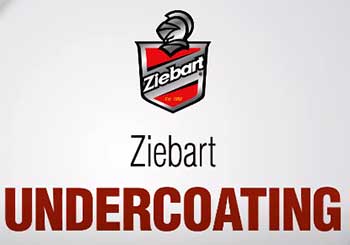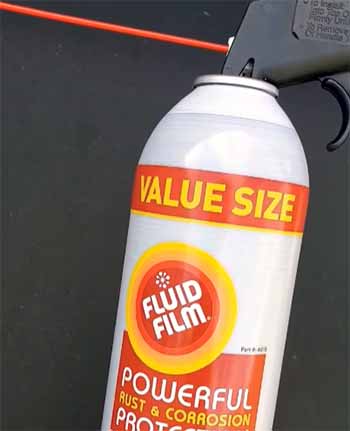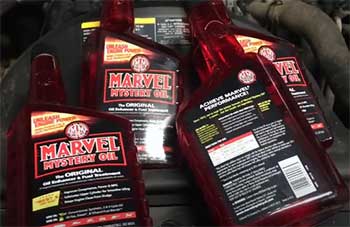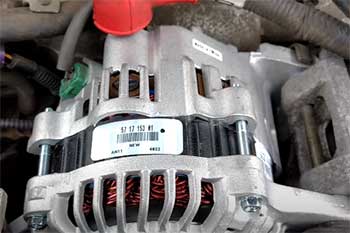Listen, if you’re like me and you want your car to last longer than your last relationship, you need to think about rust protection.
I’ve been around the block with my vehicles, and Ziebart undercoating has caught my eye for a reason—it promises to shield your ride from the rust monster that haunts every car owner, especially if you live where salt and snow are a thing.
Trust me, you don’t want to skip this. It’s an investment in your car’s future, and after trying it myself, I’m here to spill the tea. You should absolutely consider Ziebart undercoating—here’s why.
My Experience With Ziebart Undercoating

So, let me take you back to last fall. I’d just bought a 2020 Jeep Gladiator—my pride and joy—and I knew winter was coming.
Living in New Jersey, where the roads turn into a salty mess every year, I wasn’t about to let my baby rust out before I’d even paid it off.
I’d heard about Ziebart from a buddy who swore by it, so I figured, why not?
I rolled up to my local Ziebart shop, a little skeptical but mostly curious.
The process was pretty straightforward.
The guy at the counter—let’s call him Joe—walked me around my Jeep, pointing out spots where rust could sneak in. He wasn’t pushy, which I appreciated, but he did try to upsell me on a ceramic coating.
I stuck to the undercoating, though—$650 for the full treatment. They lifted my Jeep up, and I watched them spray this thick, black stuff all over the undercarriage. It smelled like tar and determination, and I’ll admit, I felt a weird sense of pride seeing my ride get armored up.
Fast forward a few months: winter hit hard. Salt, slush, and grime were everywhere, but when I peeked under my Jeep after a particularly brutal storm, it looked clean—no rust, no corrosion, just that black coating doing its job.
I even took it to my mechanic for an oil change, and he gave me a nod of approval, saying, “Whoever did this knew what they were doing.” That’s when I started thinking Ziebart might actually be worth it.
Sure, I’ve had to go back for an annual inspection (more on that later), but so far, my experience has been solid. It’s not perfect—there’s some overspray on my exhaust that bugs me—but I’m hooked enough to keep you posted.
Pros of Ziebart Undercoating
Alright, let’s break down why I’m singing Ziebart’s praises. It’s not just about my Jeep looking good under there; there’s some real meat to this product that’s worth your attention. Here’s what I’ve found after living with it—and talking to other car nuts who’ve gone the Ziebart route.
- Serious Rust Protection

First off, Ziebart’s undercoating is like a suit of armor for your car’s underbelly.
Where I live, salt is dumped on the roads like it’s seasoning for a giant stew, and that’s a death sentence for metal.
Ziebart uses this thick, tar-like coating that sticks to every nook and cranny—frame rails, wheel wells, you name it.
After a full winter, my Jeep’s underside still looks factory-fresh.
I’ve talked to folks who’ve had Ziebart on older cars, like a guy with a ’75 Pinto that’s still rust-free decades later. That’s the kind of longevity I’m chasing, and Ziebart seems to deliver.
- Warranty That Packs a Punch
Here’s something I didn’t expect to love: the warranty. When I got my undercoating done, they handed me a contract promising protection against rust-through for 10 years, as long as I bring it in for annual checkups. That’s a big deal—most brands don’t back their stuff up like that.
I’ve heard stories of Ziebart fixing small issues under warranty, like a guy whose cab corner started bubbling after a few years, and they patched it up no charge. It’s peace of mind, you know? You’re not just throwing money at a spray and hoping for the best.
- Noise Reduction Bonus
Okay, this wasn’t why I signed up, but it’s a sweet perk. That thick coating doesn’t just fight rust—it dampens sound. My Jeep’s a beast, but it used to have this tinny rattle from the road that drove me nuts.
After Ziebart, it’s quieter—not dead silent, but enough that I don’t have to crank the radio to drown it out. Some shops even offer a specific sound-deadening version, but the standard undercoating does the trick for me.
If you’re sensitive to road noise, you’ll appreciate this little side hustle Ziebart’s got going.
- Professional Application
I’m no DIY guru—give me a spray can, and I’ll probably coat my driveway instead of my car. Ziebart’s pros know what they’re doing.
They’ve got the lifts, the tools, and the experience to hit every spot without clogging drain holes or leaving gaps.
When I watched them work, they were methodical, spraying inside frame rails and under the bed like it was second nature. You can’t replicate that at home unless you’re a gearhead with a garage setup. For me, the professional touch is a big win.
- Long-Term Value
Let’s talk cash. Yeah, $650 stung upfront, but think about it: rust repairs can cost thousands—new panels, welding, labor. My mechanic once quoted me $1,200 to fix a rusted frame on an old truck I had.
Ziebart’s a fraction of that, and if it keeps my Jeep solid for a decade, I’m saving money in the long run. Plus, a rust-free ride holds its resale value better. I’m betting this investment pays off when I trade up someday.
Cons of Ziebart Undercoating

Now, I’m not here to sell you a fairy tale. Ziebart’s got its downsides, and I’ve run into a few hiccups myself. Let’s unpack the not-so-shiny parts so you know what you’re signing up for.
- Price That Bites
I’ll be real: $650 isn’t pocket change. I flinched when Joe gave me the quote, and I’ve seen prices climb to $1,000+ depending on the vehicle and location. Compared to a $10 can of Fluid Film you can spray yourself, Ziebart feels like a splurge.
If you’re on a tight budget or your car’s already a rust bucket, you might hesitate. I get it—it’s a premium product with a premium price tag, and that’s not for everyone.
- Maintenance Commitment
Here’s where it gets annoying. That warranty I raved about? It’s tied to annual inspections, which cost me $85 last time. Miss one, and they can void it. I forgot to schedule mine once and had to scramble to keep it valid.
Plus, dropping off my Jeep for a day isn’t always convenient—I’ve got a life, you know? It’s not a set-it-and-forget-it deal; you’ve got to stay on top of it, and that can feel like a chore.
- Potential for Sloppy Work
My overspray issue isn’t unique. I’ve read gripes online about Ziebart techs getting sloppy—coating on paint, exhausts, even seats if they’re not careful.
One guy on a forum said his truck came back with dents and overspray everywhere, and the shop shrugged it off. My experience was mostly clean, but that exhaust smudge bugs me every time I see it.
It’s a reminder that quality depends on the shop, and not every Ziebart is a home run.
- Moisture Trapping Debate
This one’s tricky. Some folks swear Ziebart’s hard coating can trap moisture if it’s not applied right, speeding up rust instead of stopping it. I haven’t seen this on my Jeep yet, but I’ve heard horror stories—like a Tacoma owner whose frame rotted out after a few years of Ziebart touch-ups.
My mechanic says modern cars are better sealed, so it’s less of a risk, but it’s still something that nags at me. You’ve got to trust the application’s perfect, and that’s a leap.
- Not a Rust Cure
If your car’s already rusty, don’t expect Ziebart to wave a magic wand. I had minor surface rust on my Jeep’s frame, and they coated over it—no biggie so far. But for serious corrosion, it’s too late.
Ziebart’s a shield, not a fix. I wish I’d known that with my old truck—it might’ve saved me some heartache. You’ve got to catch it early, or you’re just dressing up a sinking ship.
Maintenance Tips For Ziebart Undercoating
Okay, so you’ve got Ziebart on your ride—now what? I’ve learned a few tricks to keep it working like it should, and I’m sharing them with you. This isn’t rocket science, but it’ll save you headaches down the road.
- Stick to the Annual Checkup: I know, I griped about the inspections, but they’re key. Ziebart’s warranty depends on it, and it’s a chance to catch any wear or damage. Last time, they touched up a spot near my wheel well where the coating thinned out—free of charge. Book it early, bring a coffee, and treat it like a car spa day. You’ll thank yourself when your undercarriage stays pristine.
- Wash Smart, Not Hard: I used to blast my Jeep with a pressure washer like I was exorcising demons, but that can chip the coating if you’re too aggressive. Now, I use a gentle rinse under there—just enough to knock off salt and mud without going full power. Aim for once a month in winter, and keep the nozzle a few feet away. Your Ziebart will hold up better, trust me.
- Check the Drains: Ziebart’s supposed to avoid clogging drain holes, but I still peek at mine every few months. Grab a flashlight and look under your doors and bed—make sure water’s not pooling anywhere. I found a clogged spot once, cleared it with a wire, and felt like a hero. It’s quick, and it keeps moisture from sneaking past the coating.
- Touch Up DIY-Style: If you spot a scratch or thin patch—like I did after scraping a rock—don’t panic. I grabbed some spray-on undercoating from an auto store and dabbed it on. It’s not Ziebart’s exact stuff, but it blends in and keeps rust out. Just don’t overdo it—less is more, and you don’t want a mess. Check with your shop first, though, so you don’t mess up the warranty.
- Watch the Seasons: Winter’s the big test, but summer matters too. Heat can bake the coating, and road grime sticks worse when it’s dry. I rinse more in spring to clear off salt, then again in fall before the snow flies. It’s like brushing your teeth—routine keeps it strong. You’ll feel the difference when your car’s still solid years later.
Ziebart Vs. Other Brands: The Showdown
Alright, let’s put Ziebart undercoating in the ring with some heavy hitters—Fluid Film, Line-X, and Krown. I’ve tinkered with these options on past rides and chatted with car buffs to see how they stack up.
Picture this as me grabbing a beer with you and breaking it down, one contender at a time. Here’s how Ziebart holds its own.
- Ziebart Vs. Fluid Film Undercoating

First up, Fluid Film—it’s the DIY darling.
I sprayed it on an old Corolla years back, and that undercarriage stayed rust-free through Boston’s salty hell.
You’re talking $30 for a few cans versus Ziebart’s $650 price tag—Fluid Film’s a steal if you’re handy.
It’s a soft, oily layer that creeps into every crack, but you’ve got to reapply it yearly.
Ziebart’s thicker, hardens up, and lasts longer with pro application and a 10-year warranty.
I love Fluid Film’s simplicity, but Ziebart’s my pick for set-it-and-forget-it vibes—less elbow grease, more staying power.
- Ziebart Vs. Line-X Undercoating

Next, Line-X—the beast of bedliners stepping into the undercoating game. A buddy’s Tacoma got the Line-X treatment, and it’s like tank armor down there—rocks, salt, nothing fazes it.
It’s tough, around $500+, but it’s overkill for most daily drivers. Ziebart’s softer, quieter, and tailored for rust protection, not just impact. Line-X feels industrial; I saw overspray on his exhaust that looked sloppy compared to Ziebart’s cleaner finish.
For my Jeep, Ziebart wins—it’s practical and doesn’t turn my ride into a fortress. Line-X is for off-road warriors, not city cruisers like me.
- Ziebart Vs. Krown Undercoating

Now, Krown—the Canadian contender.
My cousin’s truck’s been Krown’d for five Ontario winters, and it’s spotless—$150 a pop, professionally sprayed, oily like Fluid Film but with a pro touch.
It’s lighter than Ziebart, so no noise reduction, but it’s less likely to trap moisture since it stays soft.
Ziebart’s warranty trumps Krown’s one-year promise—10 years of coverage is hard to argue with.
Krown’s cheaper and solid for a quick fix, but Ziebart’s thicker coating and long-term commitment feel more robust.
I’d go Krown for a beater, Ziebart for a keeper like my Gladiator.
Frequently Asked Questions (FAQ)
From what I’ve seen, Ziebart’s undercoating can last a decade or more if you keep up with the annual inspections. My Jeep’s still solid after a year, and I’ve heard from folks with 20-year-old cars still rust-free thanks to Ziebart. The warranty’s good for 10 years, but the coating itself could outlast that with care. It’s not forever, though—wear and tear will thin it out eventually.
It’s a hot debate. Ziebart’s supposed to seal out water, and mine’s been fine so far. But if it’s applied sloppy or over rust, some say it can trap moisture and make things worse. I haven’t hit that snag, but I check my drains to be safe. Good application’s everything—pick a solid shop, and you’re less likely to sweat this.
Tough call—it’s your car, your rules. Ziebart’s tops for pro-grade protection and longevity, especially with that warranty. Fluid Film’s a DIY dream—cheap and effective. Krown’s great for a pro spray on a budget, and Woolwax is thicker for the hands-on crowd. Line-X is hardcore but niche. I lean Ziebart for my Jeep, but if you’re in a pinch, Fluid Film’s hard to beat.
Nope, it’s not a miracle worker. Ziebart coats over minor surface rust—like mine—without a hitch, but it won’t fix deep corrosion. If your frame’s already toast, it’s too late. I learned that the hard way with an old truck. Get it on a new or clean ride, and it’s a preventer, not a healer.
Conclusion: Ziebart’s Worth Your Bucks
After a year with Ziebart undercoating, I’m sold—you should be too. It’s kept my Jeep rust-free through a brutal winter, and the pros outweigh the cons for me.
Sure, it’s pricey and demands some upkeep, but the protection, warranty, and peace of mind are hard to beat. If you love your car like I love mine, Ziebart’s a no-brainer.
Get it done, keep it maintained, and watch your ride outlast the doubters. You won’t regret it.

